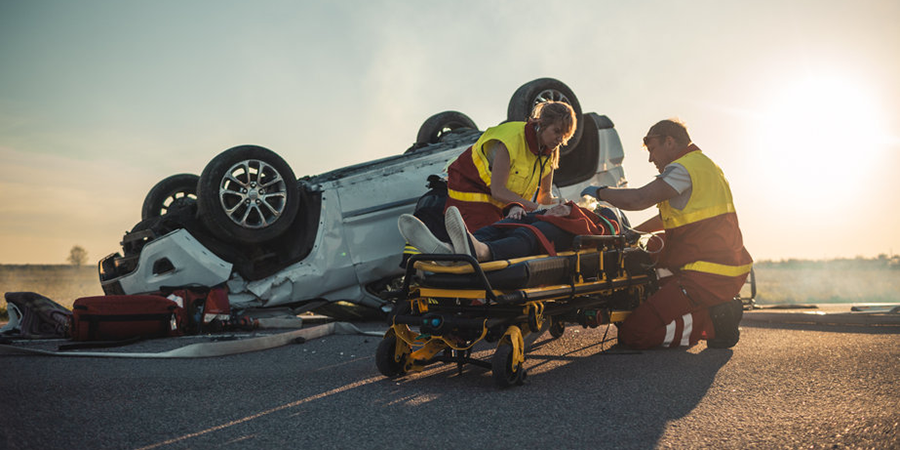
Although encountering airway trauma is, fortunately, a rare occurrence for many first responders — as it accounts for less than one percent of traumatic injuries — the incidence of such injuries is increasing each year, and it’s vital that your team practices regular drills and remains educated about the most effective strategies for tracheal airway management in patients.
When first responders with little to no experience in navigating airway trauma are thrust into unfamiliar patient scenarios, they may be unable to provide the safest and most efficient treatment solutions for patients. To help avoid this, we’ve put together this guide of what EMS teams should keep in mind when treating patients with airway trauma in both prehospital and emergency department environments.
Identifying Types of Trauma
Before you can utilize the proper strategies and tools to treat a trauma patient, you must first identify the type(s) of trauma you’re dealing with through patient assessments. Some traumas, such as severe airway injuries, are more serious than others. Severe traumas, like gunshots or knife wounds, are injuries that can disrupt the continuity of the larynx and trachea and have life-threatening consequences for patients if not treated properly. Minor airway traumas, which might include puncture wounds from teeth or a scrape from an endotracheal tube, might appear differently and require different treatment solutions than severe ones.
Objects penetrating or lodged in the airway, as well as obstructions from airway secretions or aspiration, or signs of broken bones in and around the airway will provide clues about the seriousness of a patient’s trauma. First responders should also search for signs of subcutaneous emphysema, such as swelling, hoarseness or inability to speak, coughing up blood and extensive bleeding from the throat.
Since airway traumas are often co-occurring with other traumas, your team should also remain vigilant in assessing spinal cord injuries, traumatic brain injuries, broken bones and injuries to organs.
Airway Management for Trauma Patients in Prehospital Settings
Unlike emergency departments where medical personnel may be more experienced in airway management and the facility is able to offer more equipment and care options, when treating trauma patients in prehospital settings, airway management resources and strategies may look a lot different. In these environments, establishing a definitive airway is not always the first priority, but rather identifying an open airway that allows for oxygenation and ventilation, and securing immediate transport to a trauma center where a more reliable airway can be established should be the primary focuses.
For most trauma patients, the airway can be managed with supplemental oxygen and basic airway maneuvers, such as the use of bag-valve-mask ventilation or rescue airway devices, prior to the placement of a definitive airway once the patient is transferred to an emergency department.
Airway Management for Trauma Patients in Emergency Department Settings
Since prehospital settings often necessitate the use of challenging equipment that might not be required in a controlled ED environment, there are sometimes complications when transitioning between locations and different oxygenation and ventilation strategies.
For example, when a patient arrives at an emergency department and their rescue airway isn’t working effectively, they must undergo manual ventilation with 100% oxygen to provide ample preoxygenation. However, if the patient is oxygenating and ventilating well enough with the rescue airway, medical personnel can defer airway exchange to an endotracheal tube.
Transporting and Suctioning Patients with Airway Trauma
The first thing to know when transporting and performing airway suctioning on trauma patients is that having safe, reliable and efficient equipment is key. Your team should check equipment daily to ensure suction units are fully charged and ready to go at a moment’s notice. Trauma scenarios are always unpredictable, so having a reliable portable suction device that can be easily manipulated for a variety of emergency situations is of utmost importance.
In some situations, suctioning may be the only option for clearing an injured airway in trauma patients. To mitigate risks for yourself and your patient, you must always keep in mind different factors related to patient positioning, airway positioning and airway limitations. Many trauma patients suffer from co-occurring spinal immobilization, which significantly limits their positioning during suctioning. To accommodate this, once the patient is secure, first responders should tilt their board up to account for drainage and achieve suctioning more smoothly. Additionally, responders may need to use chin lifts or jaw thrusts to keep the patient’s airway open while performing suction and until an oral airway is inserted.
Just like with any other patients, treating trauma patients requires continued caution and adjustments depending on the patient’s unique circumstances, the treatment and transport settings and the resources responders have on hand. You can read more articles on SSCOR’s blog to learn more about treating patients with airway trauma, or find SSCOR’s roster of EMS suctioning equipment here.














